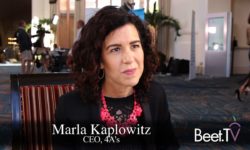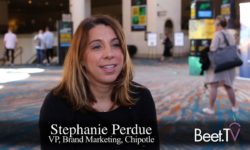ORLANDO — It is three years now since the ANA’s K2 Transparency Report kick-started a procession of outcries in media land, accusing agencies of operating a system of rebates and kickbacks that worked against brand clients by hiding substandard effectiveness, leading to ad-tech vendors also being accused of obfuscating “ad-tech tax” fees siphoned away from real advertising spend.
But, whilst all manner of initiatives has aimed to tackle the problems, and whilst ad-tech platforms have enjoyed professing their own higher standards versus those of rivals, “transparency” issues still appear to persist.
So MediaMath, one of the leading ad-tech software suppliers, is attempting to reboot the entire supply chain with a new initiative, Source, that makes several promises all at once, including:
- 100% “accountability” by the end of 2020, meaning “full visibility into supply path mechanics and costs” etc.
- 100% “addressable” by the end of 2020, meaning “real humans that brands can reach”, versus mere targeting criteria.
- An extension to MediaMath’s partnership with White Ops, whose software identifies bots that defraud advertisers.
“We’re literally doing the things that are necessary in order to starve fraud out at the source and remove it from the transaction entirely,” says MediaMath CEO Zawadzki in this video interview with Beet.TV.
What does that mean in practice? In public pronouncements, Source seems to be described variously as a “framework”, an “ecosystem”, a “product” and a “platform”.
MediaMath appears to have assembled a select roster of partners, under new terms of trade, in a configuration it believes better delivers the kind of transparent supply chain advertisers want, short-circuiting some of the messiness of the totally-open ad-buying world. Or, as Zawadzki describes it, “rethinking what was important” with “really, really clear integrations between the key components”.
As AdExchanger reports: “They include Havas Media and its own advertising customers, SSPs Rubicon Project (digital) and Telaria (TV), news publishers such as Business Insider, News Corp. and IBM’s Weather Company, and other vendors. Oracle Data Cloud fills the third-party verification role with Moat, and White Ops is used for pre-bid fraud detection.”
Zawadzki adds: “Because we had the opportunity to redesign the actual flow through the ecosystem, we could be bolder about how we contemplated that.”
That means Source will employ “radical transparency, bi-directionally for every hop in the value chain”, he explains: “To participate you literally have to… you know everybody that’s involved in a transaction, you know that the value that they create, you know the role that they’re playing, you know the price that they extract.”
As much as anything, Source appears to be an evolutionary project designed to raise transparency standards in digital advertising – starting small, but with big ambitions.
“By the end of 2020, I want to have the whole backbone of digital advertising re-engineered in this way,” Zawadzki says. “We want everybody ultimately to be part of Source … as they’re all willing to play by these very, very high standards and rules.”
This video is part of Beet.TV’s coverage of the ANA Masters of Marketing Conference in Orlando, 2019. The series is sponsored by iSpot.tv. For more videos from the series, please visit this page.






































